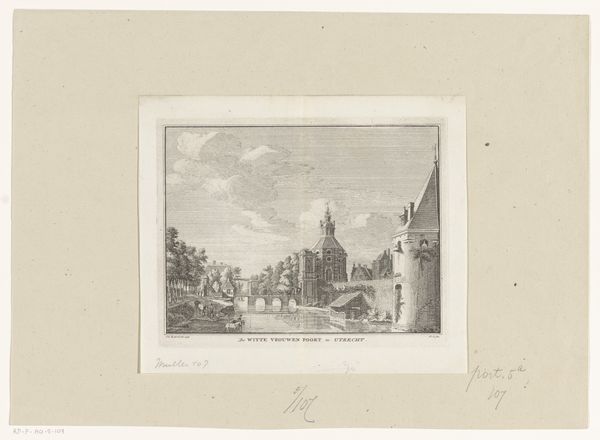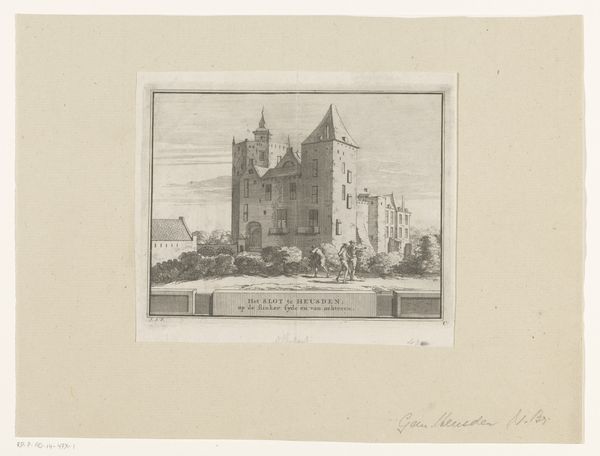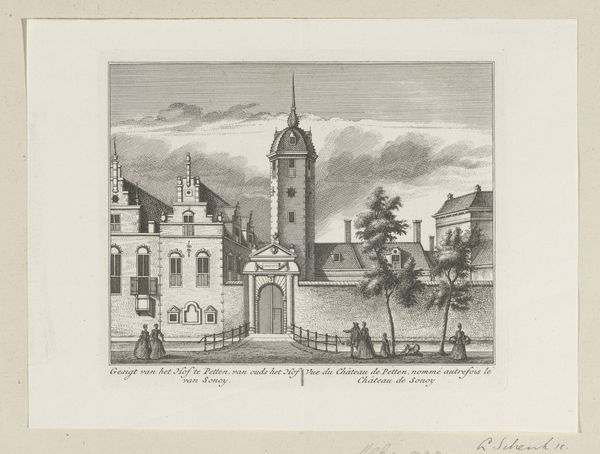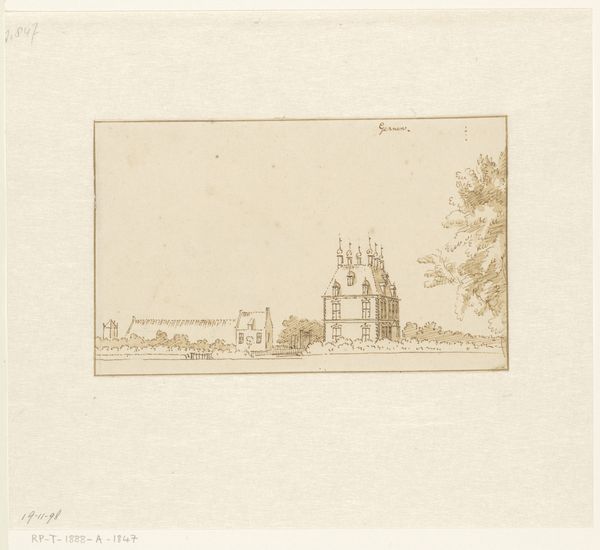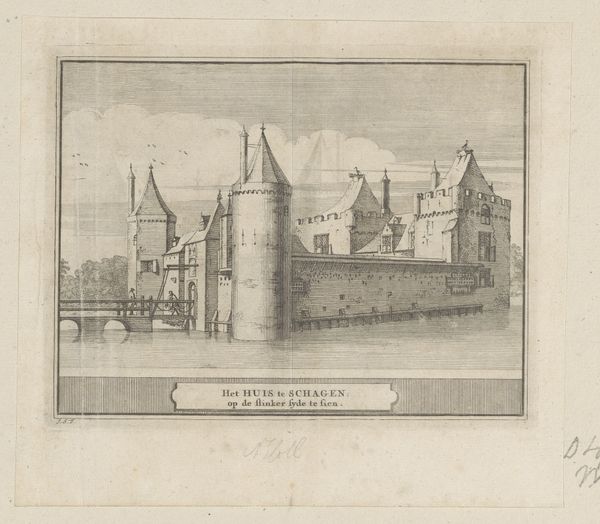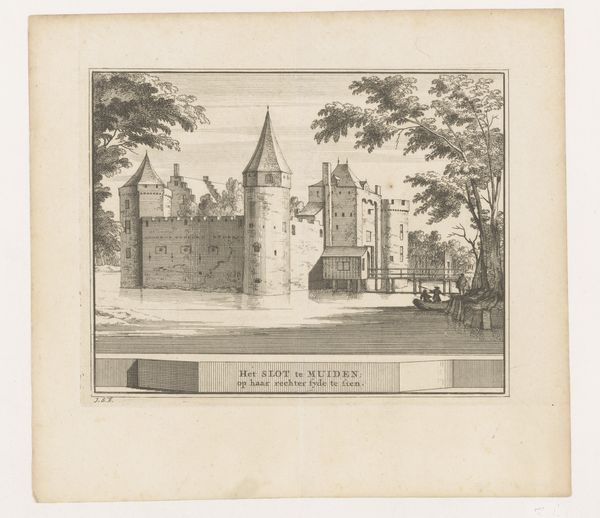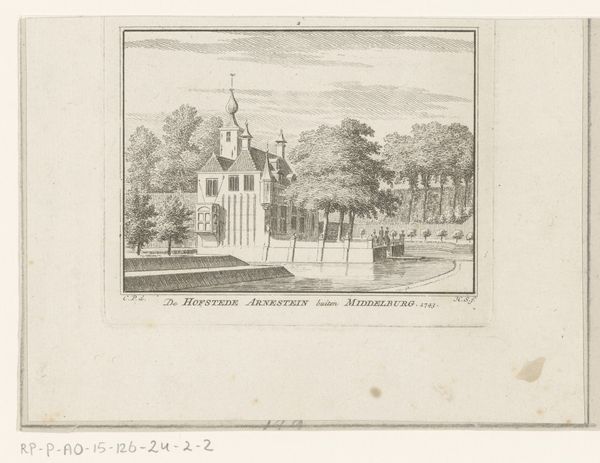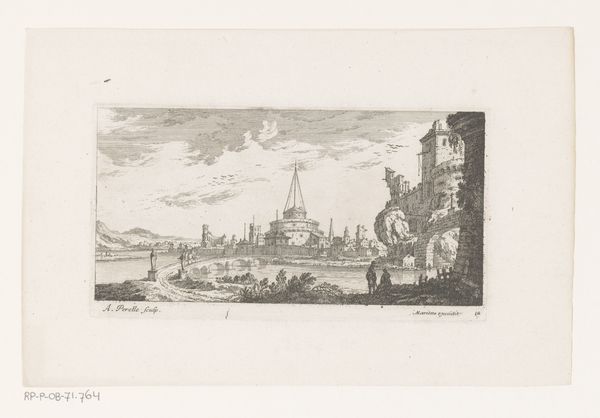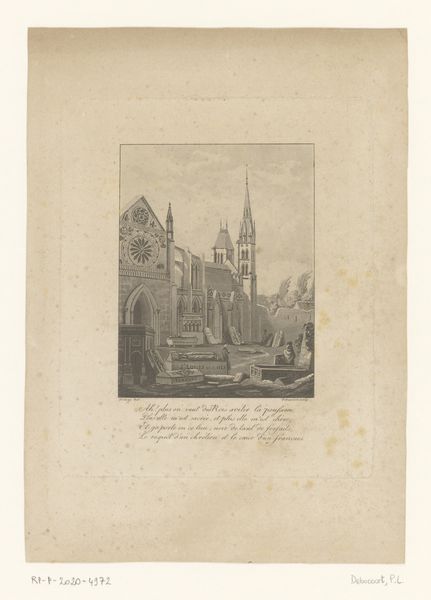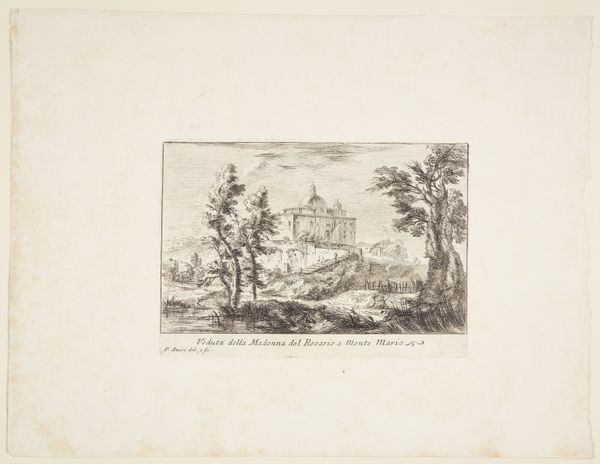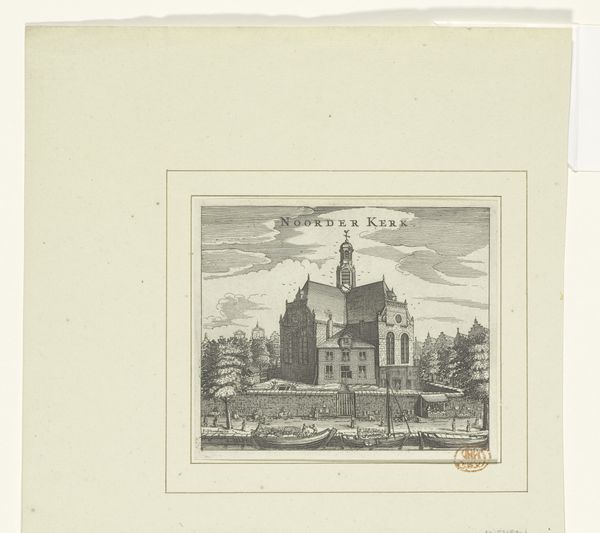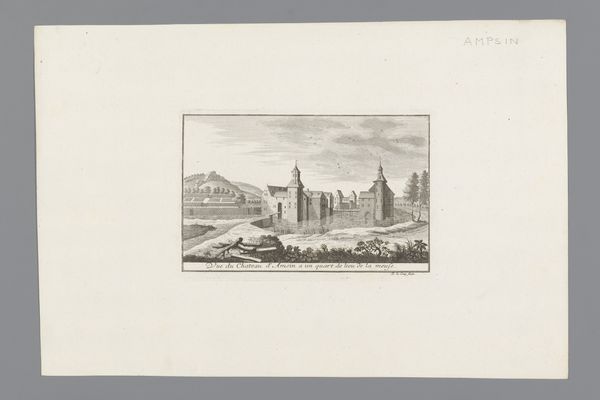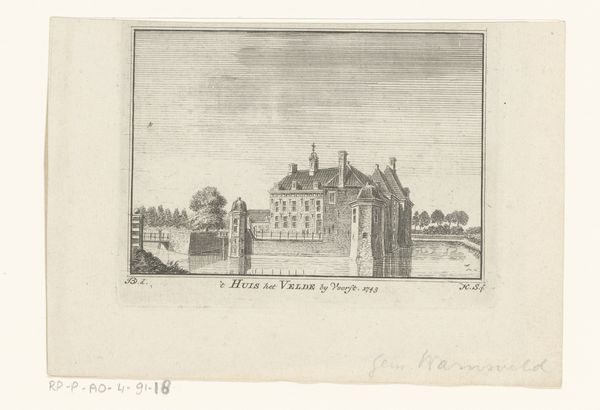
Dimensions: height 78 mm, width 103 mm
Copyright: Rijks Museum: Open Domain
Hendrik Spilman made this print of the Veersepoort in Middelburg in 1743. It’s an etching, meaning that the image was created by using acid to bite lines into a metal plate, which was then inked and printed onto paper. The linear quality of the print gives us a lot of information. Spilman was able to describe textures – the stone of the gate, the water in the canal – simply by varying his marks. He probably would have used a tool called a burin to incise the lines; its sharpness allowed for a very precise, descriptive effect. The labor that went into creating this plate is considerable, the artist carefully rendering the scene in great detail. Prints like this one were relatively inexpensive to produce, which meant they could circulate widely. In this way, Spilman's etching is both a work of art, and a form of early media. It demonstrates how an artisanal technique can be used to capture and disseminate views of the world.
Comments
No comments
Be the first to comment and join the conversation on the ultimate creative platform.
